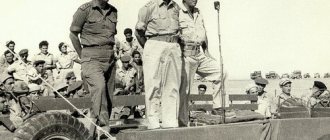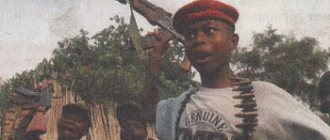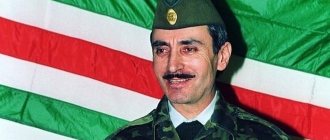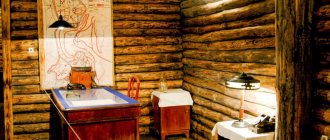The war between Iran and Iraq, which began 40 years ago and lasted for eight long years (from 1980 to 1988), became the bloodiest conflict of the second half of the 20th century. The number of victims of the war is still unknown: only according to rough estimates, we are talking about one and a half million dead on both sides. This war was the last of its kind confrontation between two states of equal strength, using the most modern and destructive methods of warfare. In the memory of tens of millions of people, the war remained the biggest shock in life. Its consequences are still being felt both in the Middle East and around the world. How exactly Iraq turned into a zone of eternal conflict of all against all, why Saddam Hussein prepared his own fall - Army Standard looked into it.
Saddam's Qadissia
For most residents of Russia these days, the state of Iraq is associated with the tragic events of the early 21st century. The NATO military operation, the execution of Saddam Hussein, the terrorist group ISIS (banned in the Russian Federation) and, as a result, the collapse of one of the leading powers in the Arab world - this is what most citizens know about Iraq.
In reality, as often happens, events in Iraq developed in such a way that the collapse of this state simply became inevitable long before the invasion of the United States and its allies. And the most fatal role in this was played by Iraqi leader Saddam Hussein.
In the summer of 1968, the Iraqi branch of the Arab Socialist Party (BA'ath) carried out a bloodless coup, taking power in the country. Among the leaders of the revolution was the young officer Saddam Hussein, who, according to rumors, was one of the first to break into the presidential palace.
Over the next ten years, Hussein held leading government positions, and in 1979 became president of Iraq. The ambitious leader relied on cooperation with leading Arab countries, as well as with the USSR and the USA. According to Yevgeny Primakov (head of the Russian government in 1998–1999), both world superpowers relied on Saddam’s regime, seeing him as a promising partner in the region.
Having the support of the leading world powers, as well as having significant gold and foreign exchange reserves replenished by the sale of oil, Hussein set out to make Iraq a leading Arab power. Both in economic and military-political aspects.
There is a misconception that Saddam Hussein was a close friend and ally of the USSR. In fact, the Iraqi leader relied heavily on military cooperation with the United States, publicly declaring that American weapons were in many ways superior to Soviet ones.
If in 1972 the share of Soviet weapons in supplies was 95%, then by 1979 it dropped to 68% and subsequently continued to fall. The Soviet government opposed the Iraqi invasion of Iran because it hoped to establish ties with the Iranian authorities, who openly opposed the United States. In this regard, the USSR joined the embargo on the supply of military products to Iraq, which is why Saddam’s army lost spare parts for military equipment. According to the CIA, the head of the KGB, Yuri Andropov, actively insisted on introducing an embargo against Iraq.
© wikipedia.org
The situation changed dramatically after the 1979 Islamic Revolution, which took place in neighboring Iran. The Shah of Iran, with whom Hussein had good political and personal relations, left the country, and an Islamic government led by the spiritual leader of Shiite Muslims, Ayatollah Khomeini, came to power.
Saddam Hussein decided to take advantage of the instability in the neighboring country and occupy the border oil-bearing areas through a military invasion. According to the plan of the military operation, it was planned to defeat the decayed units of the Iranian army, occupy a larger area on Iranian territory with the prospect of a possible attack on Tehran and the overthrow of the Iranian government.
In government propaganda, the war was called “Saddam’s Qadissia” - in memory of the Battle of Qadissia in 636, in which the troops of the Arab Caliphate defeated the Persian army.
"Sacred Defense"
The plans of the Iraqi General Staff were based on the logical assumption that Iranian troops after the revolution did not pose a serious threat. The career officers of the former Shah's army had no combat experience, many of them were executed by the Islamic authorities. Iraq had an advantage in armored vehicles, modern weapons and the level of training of army personnel.
The only thing Iran could counter the invasion was numerical superiority and morale. Therefore, when on September 22, 1980, Iraqi troops crossed the border into Iran without an official declaration of war, the Islamic government appealed to the people to defend their homeland and the gains of the revolution. In state propaganda, the war was called nothing less than “Sacred Defense.”
As one would expect, the advancing group of Iraqi troops swept away the enemy and was able to occupy a number of border territories, but this was the end of their successes. Iraqi troops encountered unexpectedly fierce resistance, which was primarily provided by volunteer forces from among Shiite Muslims, as well as units of the Islamic Revolutionary Guard Corps (IRGC).
© wikipedia.org
The Iraqi invasion sparked a surge of revolutionary patriotism in Iran. The troops of the Islamic Revolutionary Guard Corps were created from among Shiite Muslims, the formation of which was carried out on a voluntary basis. The IRGC units were distinguished by their hatred of the invaders, high morale, and an almost complete lack of military training.
There are known cases when IRGC assault groups launched frontal attacks on Iraqi tank formations, using only manual means of combat, and inflicted significant damage on the enemy. From among the volunteers, sabotage groups were formed that attacked the enemy tens of kilometers from the front line.
Today, the entire senior command of the Iranian army and IRGC is staffed by veterans of the Iran-Iraq war, who have gone from private volunteers to generals - a unique example for security forces around the world.
Plumber engineer Qassem Soleimani volunteered for the front. He became a legendary military leader, a general, and rose to the position of commander of the IRGC special operations forces.
The future Chief of the General Staff of the IRGC, Mohammad Bagheri, volunteered for the Iran-Iraq War, having qualified as a teacher of political geography.
Iranian Defense Minister Amir Khatami volunteered for the people's militia in 1980.
The real test for the Iraqi troops was the protracted urban battles. To capture the city of Khorramshahr, 15 thousand people and 200 armored vehicles were gathered against 5,000 people in the city garrison. Fierce urban fighting, for which Khorramshahr was called the “Iranian Stalingrad” in the press, led to the capture of the city by Iraqi troops. The Iraqis, however, suffered huge losses. In this regard, Baghdad chose to abandon plans for a further offensive.
By the end of 1980, the fighting took on a protracted positional nature, which Baghdad clearly did not count on when planning the military operation. The morale of the soldiers fighting in the "alien" war soon began to decline, while in Iran the fight for the homeland inspired thousands to join the army, the IRGC and the Bassij militia.
By 1982, Iranian troops were able to regroup and, during a series of offensive operations, not only drove the enemy out of Iranian territory, but also began an offensive deep into Iraq.
Until 1988, fighting continued in the border zone, as neither side was able to achieve a decisive advantage. In the absence of progress on the fronts, the parties switched to a “war of cities” - rocket attacks on populated areas, infrastructure and military bases on enemy territory. And it was at this stage that Saddam Hussein made his main and, in fact, fatal mistake.
© wikipedia.org
War on land and sea
Iran's next offensive against Baghdad was stopped 40 kilometers from the capital. During this attack, 120 thousand soldiers were killed. In 1983, Iranian troops, with the support of the Kurds, invaded the north of the country. The Shiites achieved their greatest tactical success in 1986, when Iraq was effectively cut off from the sea due to the loss of control over the Faw Peninsula.
The war at sea led to the destruction of oil tankers, including those belonging to foreign countries. This prompted world powers to do everything to stop the conflict.
Many were waiting for the Iraq War to end. The US sent a navy to the Persian Gulf to escort its tankers. This led to clashes with the Iranians. The worst tragedy was the crash of the A300 passenger plane. It was an Iranian airliner flying from Tehran to Dubai. It was shot down over the Persian Gulf after being fired upon by a US Navy guided missile cruiser. Western politicians said it was a tragic accident as the plane was allegedly mistaken for an Iranian fighter.
At the same time, a scandal known as Iranian Watergate, or Iran-Contra, broke out in the United States. It became known that some influential politicians authorized the sale of weapons to the Islamic Republic. Iran was under an embargo at the time and it was illegal. Assistant Secretary of State Ellot Abrams was involved in the crime.
Operation Anfal
In the conditions of a protracted “trench” war, both countries began to think about creating more lethal types of weapons. In Iran, the nuclear program started under the Shah was resumed, while Baghdad chose to rely on chemical weapons. The same one that later destroyed the regime of Saddam Hussein.
The Iraqi authorities decided to openly violate the Geneva Convention of 1925 solely out of fear of a possible military defeat. When planning the invasion of Iran, the fact of the enemy's overwhelming numerical advantage was completely ignored. By 1986, Iran's population was 49.5 million versus Iraq's 16.3. The lack of manpower had to be compensated for by prohibited technologies.
It is generally accepted in the Russian press that chemical weapons in Iraq were just a pretext for the US invasion in 2003, and that the only sample of them - a test tube demonstrated at the UN by Secretary of State Colin Powell - was fabricated. In reality, the United States had complete information about Iraqi chemical weapons, since they themselves participated in their creation.
According to a US Senate investigative committee report (the Riegle Report), published on February 9, 1994, US companies exported chemical weapons derivatives, as well as strains of deadly diseases such as anthrax, to Iraq. According to the Riegle Report, the US Commerce Department approved 771 export licenses for dual-use technologies to Iraq during the war.
All the capacities of the country's chemical industry were devoted to the production of mustard gas and other toxic substances. According to UN estimates, from 1984 to 1990, 68 thousand 155-mm shells filled with mustard gas were manufactured for the Iraqi army. Of these, almost 55 thousand were used during the Iran-Iraq War.
© wikipedia.org
The use of chemical weapons was not limited directly to the combat zone. From 1984 to 1988, 12 thousand air bombs filled with chemical warfare agents were dropped on peaceful cities in Iran and Iraqi Kurdistan.
At the same time, the use of chemical weapons was not limited only to Iranian territory. Due to failures on the fronts of the war in Iraq, popular uprisings began. A long-running conflict has reignited in Iraqi Kurdistan, a region with historical ties to Iran and dreams of independence. To suppress Kurdish protests, Operation Anfal was organized, which killed at least 180 thousand people. As part of the operation on March 16, 1988, the Kurdish city of Halabadja was subjected to chemical bombing. The incident killed 5,000 civilians. It is noteworthy that these incidents were not condemned by the United States and other Western countries.
Thanks largely to the widespread use of chemical weapons, by 1988, Iraqi troops were able to drive the Iranians out of their territory, after which peace was concluded between the countries without any gains for both sides.
USA vs Iran
In the last year of the war (1987-1988), Iran again tried to capture the strategically important port of Basra. It was a desperate attempt to end such a bloody campaign as the Iraq War. The reasons were that both countries were exhausted.
The Gulf War once again affected the US Navy. This time, the Americans decided to attack two Iranian oil platforms, which were used as platforms for attacks on neutral ships. The Marine Corps, an aircraft carrier, 4 destroyers, etc. were involved. The Iranians were defeated.











